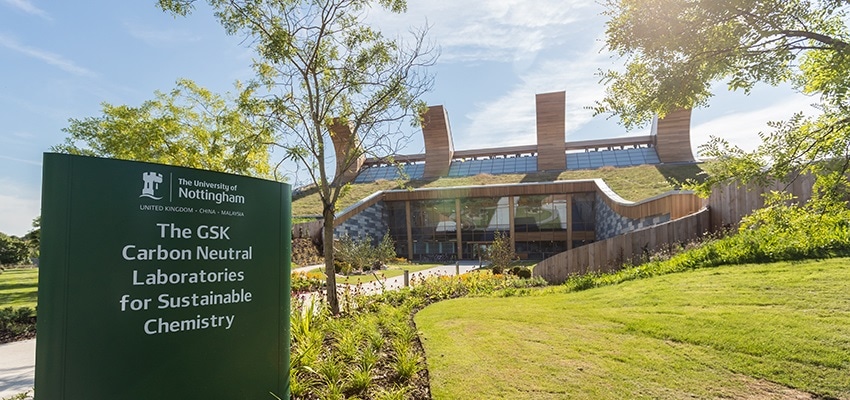Researchers have been working on new, sustainable techniques to synthesize chemicals by leveraging the inexhaustible, green energy of visible light as a substitute to conventional chemical methodologies that necessitate the use of heavy metals and toxic reagents.

Image Credit: University of Nottingham.
Scientists at the University of Nottingham’s School of Chemistry, based at the GSK Carbon Neutral Laboratory, have published their latest study “Visible Light-driven conjunctive olefination” in Nature Chemistry.
The creation of novel drugs and agrochemicals usually requires the analysis of various structural analogs to fine-tune their bioactivity or other crucial chemical properties. In general, chemists access these analogs using the chemical modification of complex bioactive molecules—a process called “late-stage functionalization.”
But only very few potential analogs can be accessed through conventional chemical techniques, which often involve the use of expensive or toxic catalysts and reagents. Several catalysts depend on the use of heavy metals, which are familiar environmental pollutants because of their bioaccumulative nature, toxicity, and persistence in the environment.
A vital tool for drug design is late-stage functionalization. This study provides a new modular, sustainable, and practical approach. The new approach will considerably increase the structures available to researchers and can be extensively used in the design and synthesis of new drugs.
We have now discovered a fundamentally new approach to structurally modify bioactive molecules handling them as practically as if they were Lego building blocks. Our approach exploits the sustainable energy of visible light, avoids the use of heavy metals and has general applicability, thereby opening access to exceptional room for the design of new derivatives.”
Dr Mattia Silvi, Research Lead, School of Chemistry, University of Nottingham
“The results of our study could significantly impact the way scientists design new analogues of complex bioactive molecules, providing a new a new powerful tool for the development of the medicines of tomorrow,” added Dr. Silvi.
This research also further demonstrates the exceptional potential of the use of visible-light energy in organic synthesis, that has impressively grown in the last decade, and is expected to continue to grow in the future, thereby opening new avenues for sustainable chemistry.”
Dr Mattia Silvi, Research Lead, School of Chemistry, University of Nottingham
Source:
Journal reference:
Filippini, D & Silvi, M (2021) Visible light-driven conjunctive olefination. Nature Chemistry. doi.org/10.1038/s41557-021-00807-x.